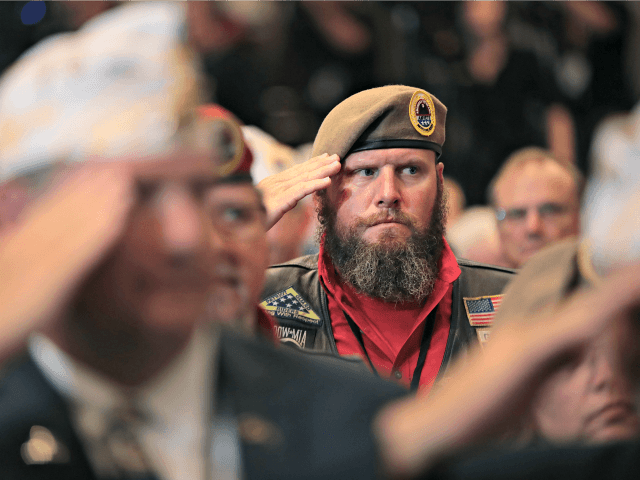After President Trump’s bipartisan expansion of GI Bill benefits in 2017, the hopes of our country’s troops look brighter than ever.
American servicemen are enjoying a period of drastically decreased unemployment, fueled by the economic stability of a strong post-2008 economy. Last year, both male and female veterans showed a significantly lower jobless rate than their non-veteran counterparts: 3.5 percent against 3.7 percent for men, and 3 percent versus 4 percent for women.
As of 2017, male veterans drew a median of about $51,000 in annual income, versus $40,000 for their civilian counterparts. For women, the salary difference stood at $41,000 over $30,000.
Of course, many veterans struggle to adjust to a lifestyle outside of their time in the armed forces. That is where organizations like Volunteers of America come in: “I think it’s important to note that most veterans come back, re-acclimate, go back to work and do quite well in the civilian life,” said Barbara Banaszynski, a VOA senior vice president of the group’s veterans’ programs.
“The majority of those veterans, with a little bit of concentrated help, are able to resume lives in the community, hold jobs and stand and move forward,” said Banaszynski. And when they cannot, even mega-corporations like Google have begun to step in.
One such measure is a “Grow with Google” utility that allows veterans to find careers using their military occupational specialty code. Banaszynski also applauded companies like Home Depot and Bank of America for making veterans a cornerstone of employee recruitment.
Still, problems persist. Complaints to the Consumer Financial Protection Bureau by the veteran population jumped 47 percent in 2016 alone. Inaccurate credit reports, credit cards, and unpaid debt top the concerns.
“We regularly hear from servicemembers who are worried that incorrect information on their credit reports will put their security clearance, duty status, potential promotion, or even military career in jeopardy,” wrote the CFPB’s Office of Servicemember Affairs in its 2018 annual report.
Still, veteran poverty rates remain lower than the general population: In 2017, service member poverty stood at 6.4 percent while the non-military rate was hovering at 10.9 percent. President Trump has taken a personal hand in the issue, having signed an executive order in August that forgave 50,000 veteran student loans.

COMMENTS
Please let us know if you're having issues with commenting.